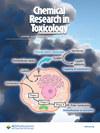Transcriptional control of metabolism by interferon regulatory factors
IF 3.7
3区 医学
Q2 CHEMISTRY, MEDICINAL
引用次数: 0
Abstract
Interferon regulatory factors (IRFs) comprise a family of nine transcription factors in mammals. IRFs exert broad effects on almost all aspects of immunity but are best known for their role in the antiviral response. Over the past two decades, IRFs have been implicated in metabolic physiology and pathophysiology, partly as a result of their known functions in immune cells, but also because of direct actions in adipocytes, hepatocytes, myocytes and neurons. This Review focuses predominantly on IRF3 and IRF4, which have been the subject of the most intense investigation in this area. IRF3 is located in the cytosol and undergoes activation and nuclear translocation in response to various signals, including stimulation of Toll-like receptors, RIG-I-like receptors and the cGAS–STING pathways. IRF3 promotes weight gain, primarily by inhibiting adipose thermogenesis, and also induces inflammation and insulin resistance using both weight-dependent and weight-independent mechanisms. IRF4, meanwhile, is generally pro-thermogenic and anti-inflammatory and has profound effects on lipogenesis and lipolysis. Finally, new data are emerging on the role of other IRF family members in metabolic homeostasis. Taken together, data indicate that IRFs serve as critical yet underappreciated integrators of metabolic and inflammatory stress. Interferon regulatory factors (IRFs) are well known as mediators of the antiviral response but there is growing appreciation of their role in metabolism. This Review discusses the current understanding of IRFs as metabolic regulators, with a particular focus on IRF3 and IRF4.


干扰素调节因子对新陈代谢的转录控制
干扰素调节因子(IRFs)由哺乳动物体内的九种转录因子组成。IRFs 对免疫的几乎所有方面都有广泛影响,但最为人所知的是它们在抗病毒反应中的作用。过去二十年来,IRFs 与代谢生理和病理生理学产生了联系,部分原因是它们在免疫细胞中的已知功能,但也因为它们在脂肪细胞、肝细胞、肌细胞和神经元中的直接作用。本综述主要关注 IRF3 和 IRF4,它们是该领域研究最深入的对象。IRF3 位于细胞质中,在各种信号(包括 Toll 样受体、RIG-I 样受体和 cGAS-STING 通路的刺激)的作用下发生活化和核转位。IRF3 主要通过抑制脂肪产热促进体重增加,还通过体重依赖性和体重非依赖性机制诱导炎症和胰岛素抵抗。与此同时,IRF4 通常具有促热和抗炎作用,并对脂肪生成和脂肪分解有深远影响。最后,关于 IRF 家族其他成员在代谢平衡中的作用的新数据也在不断涌现。总之,这些数据表明,IRFs 是代谢和炎症应激的关键整合因子,但却未得到足够重视。
本文章由计算机程序翻译,如有差异,请以英文原文为准。
求助全文
约1分钟内获得全文
求助全文
来源期刊
CiteScore
7.90
自引率
7.30%
发文量
215
审稿时长
3.5 months
期刊介绍:
Chemical Research in Toxicology publishes Articles, Rapid Reports, Chemical Profiles, Reviews, Perspectives, Letters to the Editor, and ToxWatch on a wide range of topics in Toxicology that inform a chemical and molecular understanding and capacity to predict biological outcomes on the basis of structures and processes. The overarching goal of activities reported in the Journal are to provide knowledge and innovative approaches needed to promote intelligent solutions for human safety and ecosystem preservation. The journal emphasizes insight concerning mechanisms of toxicity over phenomenological observations. It upholds rigorous chemical, physical and mathematical standards for characterization and application of modern techniques.

 求助内容:
求助内容: 应助结果提醒方式:
应助结果提醒方式:


